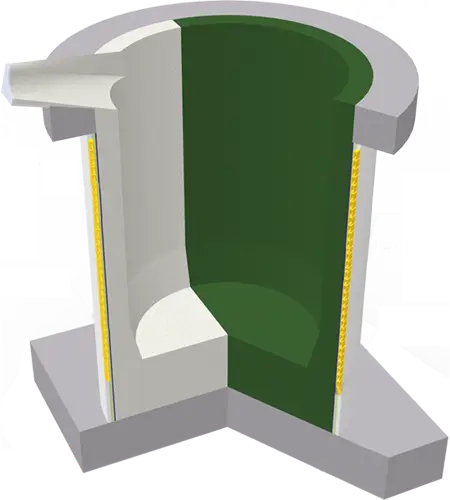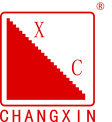The development of induction furnace and the progress of refractory material technology is closely related to the design of large-scale industrial crucible induction furnace is often first from the choice of refractory materials and furnace lining simulation test. Trench induction furnace capacity increase, the expansion of the scope of application (from non-ferrous metal melting to ferrous metal melting), from cast iron heat preservation to cast steel heat preservation and single induction body power, are in the melting trench refractory material development and furnace construction process has been improved before the realization. In any case, the choice of lining materials for induction furnaces is based primarily on the utilization and economy of the furnace. Whether for the crucible furnace crucible lining or trench furnace melting trench lining, for the sake of electrical close coupling, the thickness of the furnace lining is aimed at in the service life does not affect the conditions, the thinner the better.
In order to ensure the normal operation of the induction furnace, the furnace lining refractory material puts forward the following requirements:
1.Sufficient refractoriness
Materials with a refractoriness higher than 1580°C are called refractory materials. The operating temperature of the induction furnace lining is generally lower than that of the molten metal. However, based on the requirements for lining life, and also taking into account the occasional or frequent over-temperature of the melt pool and the melt channel section, it is often unsafe to use materials with low refractoriness and softening temperatures in cast iron induction furnaces. As a lining material for cast iron induction furnaces, the refractoriness should be greater than 1650 to 1700°C, and the softening temperature should be higher than 1650°C.
2.Good thermal stability
Induction furnace relies on electromagnetic induction exchange to transfer energy, in order to ensure that the furnace has a high electrical efficiency, the induction coil part of the furnace lining thickness is limited, which makes the furnace lining in the radial temperature gradient is larger in the case of work. In addition, the temperature of the furnace lining is always changing during the furnace working process due to the influence of charging, iron discharge and even furnace stoppage, and the lining is often cracked due to uneven heating, which reduces the service life of the furnace lining. Therefore, as a refractory for induction furnace, it should have excellent thermal stability.
3.Good chemical stability
The chemical stability of the material and the life of the furnace lining has a close relationship. Furnace lining materials shall not be hydrolyzed and differentiated at low temperatures, shall not be easily decomposed and reduced at high temperatures, shall not be easy to form low melting point substances with slag in the melting process, shall not be easy to produce chemical reactions with the molten metal and additives, and shall not contaminate the molten metal and additives to produce chemical reactions, and shall not contaminate the molten metal.
4.Small coefficient of thermal expansion
Temperature changes, the volume should be relatively stable, without dramatic expansion and contraction.
5.High mechanical properties
In the low-temperature state should be able to withstand the impact of the furnace charge; in the metal in the high-temperature molten state should be able to withstand the net pressure of the metal liquid and strong electromagnetic stirring effect; in the metal liquid under the long-term scouring effect of wear-resistant and erosion-resistant.
6.Good insulation properties
The furnace lining must not conduct electricity at high temperatures, otherwise it will cause leakage and short circuit, resulting in serious accidents.
7.Good construction performance of the material
Easy to repair and sintering performance should be good, easy to build and maintain the furnace. Induction furnace refractory requirements are quite strict, almost no natural refractory materials can meet the above requirements, which requires different conditions of use, select the appropriate refractory materials. At the same time should be natural mineral resources for the necessary synthesis and reprocessing, so that its performance to meet the requirements of the induction furnace.

